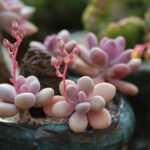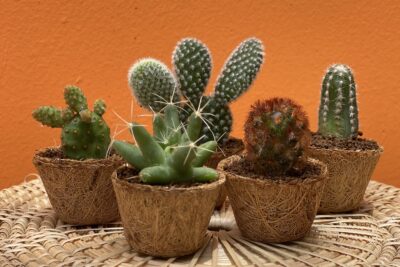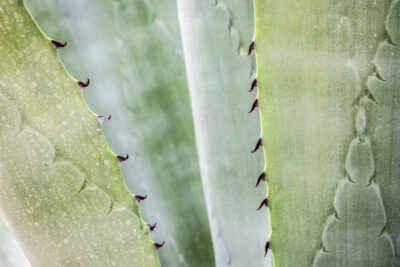
Common Challenges in Succulent Cultivation: How to Overcome Them

As succulent plants continue to grow in popularity, more and more plant enthusiasts are trying their hand at cultivating these unique and resilient plants. Succulents are known for their ability to store water in their leaves, stems, and roots, making them well-suited for dry and arid environments. However, despite their reputation for being low-maintenance, succulents can still present a number of challenges to even the most experienced gardeners.
We will explore some of the common challenges that arise in succulent cultivation and provide tips on how to overcome them. We will discuss issues such as overwatering, improper lighting, pests and diseases, and the importance of choosing the right soil and containers. By understanding these challenges and implementing the necessary strategies, you can ensure the health and vitality of your succulent plants and enjoy their unique beauty for years to come.
- Use well-draining soil to prevent root rot
- Water succulents sparingly to avoid overwatering
- Provide sufficient sunlight for healthy growth
- Protect succulents from extreme temperatures
- Avoid overcrowding to prevent competition for resources
- Identify and treat pests or diseases promptly
- Prune succulents regularly to maintain their shape
- Fertilize succulents with a balanced fertilizer
- Be patient and allow succulents time to acclimate to new environments
- Research specific care requirements for different succulent species
- Frequently Asked Questions
Use well-draining soil to prevent root rot
One of the most common challenges in succulent cultivation is root rot caused by overwatering or poor drainage. Succulents have adapted to thrive in arid conditions with limited water availability, so it is crucial to provide them with well-draining soil.
When selecting soil for your succulents, opt for a mix that consists of materials such as coarse sand, perlite, or pumice. These components enhance drainage and prevent water from pooling around the roots, reducing the risk of root rot.
Additionally, ensure that the pot or container you use has drainage holes at the bottom to allow excess water to escape. This will help prevent waterlogged soil, which can suffocate the roots and lead to rotting.
Remember, succulents are adapted to survive periods of drought, so it's better to underwater than to overwater. Allow the soil to dry out completely between waterings, and avoid misting or spraying water directly onto the leaves, as this can increase the chances of rot.
By using well-draining soil and practicing appropriate watering techniques, you can overcome the challenge of root rot and promote healthy growth in your succulents.
 Fixing Brown Leaves on Succulents: Troubleshooting Guide
Fixing Brown Leaves on Succulents: Troubleshooting GuideWater succulents sparingly to avoid overwatering
One of the most common challenges faced by succulent growers is overwatering. Succulents are known for their ability to store water in their leaves and stems, making them more resistant to drought. However, this also means they are prone to root rot if they are given too much water.
To avoid overwatering your succulents, it is important to water them sparingly. A good rule of thumb is to wait until the soil is completely dry before watering again. This may vary depending on the climate and the type of succulent you are growing, so it's important to observe your plants and adjust your watering schedule accordingly.
When watering your succulents, it's best to use a watering can with a narrow spout or a spray bottle to ensure that only the soil gets wet and not the leaves. Avoid pouring water directly onto the leaves, as this can lead to rot or fungal diseases.
Additionally, it is recommended to use well-draining soil for your succulents. A mixture of regular potting soil and coarse sand or perlite works well, as it allows excess water to drain away quickly, preventing the roots from sitting in water.
Remember, succulents are adapted to survive in arid conditions, so they do not require as much water as other houseplants. By watering them sparingly and providing them with well-draining soil, you can overcome the challenge of overwatering and ensure the health and longevity of your succulents.
Provide sufficient sunlight for healthy growth
One of the most common challenges in succulent cultivation is providing sufficient sunlight for healthy growth. Succulents are plants that naturally thrive in sunny and arid conditions, so it is crucial to ensure they receive an adequate amount of sunlight.
 Is My Leaning Succulent a Problem? Get Answers Here!
Is My Leaning Succulent a Problem? Get Answers Here!Solution:
- Place your succulents in a location where they can receive at least 6 hours of direct sunlight per day. This can be near a sunny window or outdoors in a sunny spot.
- If you don't have access to direct sunlight, consider using artificial grow lights specifically designed for plants. These lights mimic natural sunlight and can be a great alternative for indoor succulent cultivation.
- Rotate your succulents regularly to ensure even exposure to sunlight. This will prevent them from leaning towards the light source and growing unevenly.
- Monitor your succulents closely to avoid overexposure to intense sunlight, as this can lead to sunburn and damage the plants. If necessary, provide some shade during the hottest hours of the day.
By providing sufficient sunlight, you can promote healthy growth and vibrant colors in your succulents. Remember to adjust the amount of sunlight based on the specific needs of each succulent variety you have in your collection.
Protect succulents from extreme temperatures
Protect succulents from extreme temperatures
Succulents are known for their ability to thrive in dry and arid conditions, but they are still susceptible to damage from extreme temperatures. It is important to provide them with the right environment to ensure their survival and growth.
During hot summer months, succulents can suffer from sunburn or heat stress if exposed to direct sunlight for prolonged periods. To protect them, consider providing some shade during the hottest part of the day or moving them to a location with indirect sunlight.
In colder climates, frost can be a major challenge for succulents. Frost can damage the cells of the plants, causing them to become mushy and ultimately leading to their demise. To protect your succulents from frost, bring them indoors or cover them with a frost cloth or blanket during freezing temperatures.
 Dolphin Succulent Care: Top Tips and Guidelines
Dolphin Succulent Care: Top Tips and GuidelinesAdditionally, rapid temperature fluctuations can also pose a threat to succulents. Avoid placing them in areas where they are exposed to drafts or drastic temperature changes, such as near air conditioning vents or open windows.
By taking these precautions, you can help your succulents thrive and overcome the challenges posed by extreme temperatures.
Avoid overcrowding to prevent competition for resources
One of the common challenges in succulent cultivation is overcrowding. When succulents are planted too closely together, they have to compete for resources such as sunlight, water, and nutrients. This can lead to stunted growth, weak plants, and an increased risk of disease and pests.
To overcome this challenge, it is important to give your succulents enough space to grow and thrive. Avoid planting them too close to each other and ensure that there is adequate room for each plant to spread its roots and receive sufficient sunlight.
Additionally, consider the mature size of each succulent variety before planting. Some succulents can grow quite large, so it's important to space them accordingly. This will not only prevent overcrowding but also create an aesthetically pleasing arrangement.
Remember, when succulents have enough space, they are more likely to develop strong root systems and healthy foliage, making them more resistant to pests and diseases.
 Essential Care Tips for Growing an Elephant Trunk Succulent
Essential Care Tips for Growing an Elephant Trunk SucculentIdentify and treat pests or diseases promptly
One of the most common challenges in succulent cultivation is dealing with pests or diseases. These tiny invaders can wreak havoc on your precious succulent collection if not identified and treated promptly. Here are some tips to help you overcome this challenge:
1. Regularly inspect your succulents
Make it a habit to regularly inspect your succulents for any signs of pests or diseases. Look out for webbing, discoloration, holes in leaves, or any unusual growths. Early detection is key to preventing the spread of infestations.
2. Use organic pest control methods
When it comes to treating pests or diseases on your succulents, it's best to opt for organic methods. Chemical pesticides can harm the delicate balance of your succulent's ecosystem. Instead, try using natural remedies such as neem oil, insecticidal soap, or a mixture of water and dish soap to control pests.
3. Isolate infected succulents
If you spot any signs of pests or diseases on one of your succulents, it's crucial to isolate it from the rest of your collection. This will prevent the spread of the infestation to healthy plants. Quarantine the infected succulent and treat it separately to minimize the risk of further damage.
4. Practice good watering habits
Overwatering or underwatering your succulents can weaken their defenses against pests and diseases. Ensure that you are watering your succulents correctly by allowing the soil to dry out completely between waterings. Avoid getting water on the leaves as this can create a damp environment ideal for pests and fungal diseases.
5. Remove affected leaves or plants
If you notice any severely infected leaves or plants, it's best to remove them from your collection. This will prevent the spread of pests or diseases to other healthy succulents. Prune off the affected parts and dispose of them properly to minimize the risk of reinfestation.
 Can Succulents Survive Winter Without Water? Tips for Winter Care
Can Succulents Survive Winter Without Water? Tips for Winter CareBy promptly identifying and treating pests or diseases, you can overcome this common challenge in succulent cultivation and ensure the health and beauty of your succulent collection.
Prune succulents regularly to maintain their shape
One of the common challenges in succulent cultivation is maintaining their shape. Succulents are known for their unique and attractive forms, but without regular pruning, they can become overgrown and lose their aesthetic appeal.
To overcome this challenge, it is important to prune your succulents regularly. Pruning not only helps maintain their shape but also promotes healthier growth and prevents overcrowding.
When pruning succulents, it is crucial to use sharp and clean tools to avoid damaging the plant. You can use pruning shears or a sharp knife to carefully remove any dead or dying leaves or stems. It is recommended to sterilize your tools before and after pruning to prevent the spread of diseases.
Start by identifying any unwanted growth or damaged parts of the succulent. Look for any leggy or elongated stems that may be affecting the plant's overall shape. Trim these stems back to a desirable length, making sure to cut just above a leaf node or joint.
Additionally, you can remove any dead or dried-up leaves by gently pulling them off from the base. This will not only improve the appearance of the succulent but also prevent the accumulation of debris that can lead to fungal infections.
Remember to prune your succulents during their active growing season, which is usually in spring or early summer. Avoid pruning during winter or dormancy periods, as the plants are more vulnerable to damage during this time.
 Comparing Maintenance: Cactus vs Succulent - Which Requires Less Care?
Comparing Maintenance: Cactus vs Succulent - Which Requires Less Care?Regular pruning will help your succulents stay compact, vibrant, and visually appealing. It is an essential practice to overcome the challenge of maintaining their shape and ensure the long-term health of your succulent collection.
Fertilize succulents with a balanced fertilizer
Succulents are known for their ability to thrive in arid conditions, but they still need nutrients to grow and stay healthy. Fertilizing your succulents with a balanced fertilizer is essential to ensure their optimal growth and longevity.
When choosing a fertilizer for your succulents, it is important to look for a balanced formula that contains equal amounts of nitrogen, phosphorus, and potassium (N-P-K). This balanced ratio will provide the necessary nutrients for your plants without promoting excessive growth or causing nutrient imbalances.
It is recommended to fertilize your succulents during their active growing season, which is typically in the spring and summer months. During this time, their nutrient demands are higher, and they can make the most of the fertilizers you provide.
Before applying the fertilizer, make sure the soil is moist but not waterlogged. This will allow the roots to absorb the nutrients more efficiently. You can either dilute the fertilizer in water according to the manufacturer's instructions or use a slow-release fertilizer specially formulated for succulents.
When applying the fertilizer, be cautious not to overdo it. Overfertilizing can lead to nutrient burn or excessive growth, which may weaken the plants. Follow the recommended dosage on the fertilizer packaging and adjust it based on the specific needs of your succulents.
 Winter Care Tips: How to Help Succulents Survive the Cold Season
Winter Care Tips: How to Help Succulents Survive the Cold SeasonRemember to always water your succulents thoroughly after fertilizing to help distribute the nutrients evenly and prevent any potential damage to the roots.
Key points:
- Choose a balanced fertilizer with equal amounts of nitrogen, phosphorus, and potassium (N-P-K).
- Fertilize during the active growing season (spring and summer).
- Ensure the soil is moist before applying the fertilizer.
- Avoid overfertilizing to prevent nutrient burn and excessive growth.
- Water your succulents thoroughly after fertilizing.
By following these guidelines and providing your succulents with the right nutrients, you can overcome the common challenge of nutrient deficiencies and promote healthy growth in your succulent collection.
Be patient and allow succulents time to acclimate to new environments
When it comes to cultivating succulents, one of the most common challenges that gardeners face is the acclimation process. Succulents are known for their ability to thrive in harsh conditions, but they still require time to adjust to new environments.
It is important to be patient during this acclimation period and avoid making sudden changes to the plant's growing conditions. When you bring a new succulent home, give it a few days to adjust to its new surroundings before making any changes to its watering or lighting schedule.
During the acclimation process, it is essential to monitor the plant closely for any signs of stress or damage. Look for wilting, discoloration, or softening of the leaves, as these can be indications that the succulent is struggling to adapt. If you notice any of these signs, consider adjusting the growing conditions accordingly.
Remember, each succulent is unique and may require different acclimation periods. Some varieties may adapt quickly, while others may take several weeks or even months. Be patient and allow the plant the time it needs to adjust.
 Reviving Wilting Succulents: The Power of Proper Care
Reviving Wilting Succulents: The Power of Proper CareResearch specific care requirements for different succulent species
When it comes to cultivating succulents, it's essential to understand that each species has its own unique care requirements. While succulents are generally known for being easy to care for, there are certain challenges that you may face if you're not aware of their specific needs.
To overcome these challenges, it is crucial to conduct thorough research on the specific care requirements of the succulent species you intend to grow. This includes understanding their preferred light conditions, watering frequency, soil type, and temperature preferences.
One way to ensure you have accurate information is to consult reputable sources such as botanical websites, specialized gardening books, or even join online communities dedicated to succulent cultivation. These resources can provide valuable insights and tips from experienced succulent enthusiasts.
By familiarizing yourself with the specific care requirements of different succulent species, you can create an optimized environment that suits their needs. This knowledge will help you avoid common pitfalls and ensure the healthy growth and longevity of your succulents.
Frequently Asked Questions
1. Why are my succulent leaves turning yellow?
Yellowing leaves in succulents can be a sign of overwatering or inadequate sunlight. Adjust your watering schedule and ensure your succulent receives enough sunlight to prevent further yellowing.
2. How often should I water my succulents?
Succulents have low water needs and should be watered sparingly. Water them only when the soil is completely dry, usually every 1-2 weeks depending on the climate and season.
 The Potential Risks of Repotting Succulents: Can It Harm or Kill Them?
The Potential Risks of Repotting Succulents: Can It Harm or Kill Them?3. How do I prevent root rot in my succulents?
To prevent root rot, ensure your succulents are planted in well-draining soil and in pots with drainage holes. Avoid overwatering and allow the soil to dry between waterings.
4. How can I propagate my succulents?
Succulents can be propagated by taking leaf or stem cuttings. Allow the cuttings to callus for a few days, then plant them in well-draining soil and provide indirect sunlight until roots develop.
If you want to read more articles similar to Common Challenges in Succulent Cultivation: How to Overcome Them, you can visit the Care and Maintenance category.






You Must Read